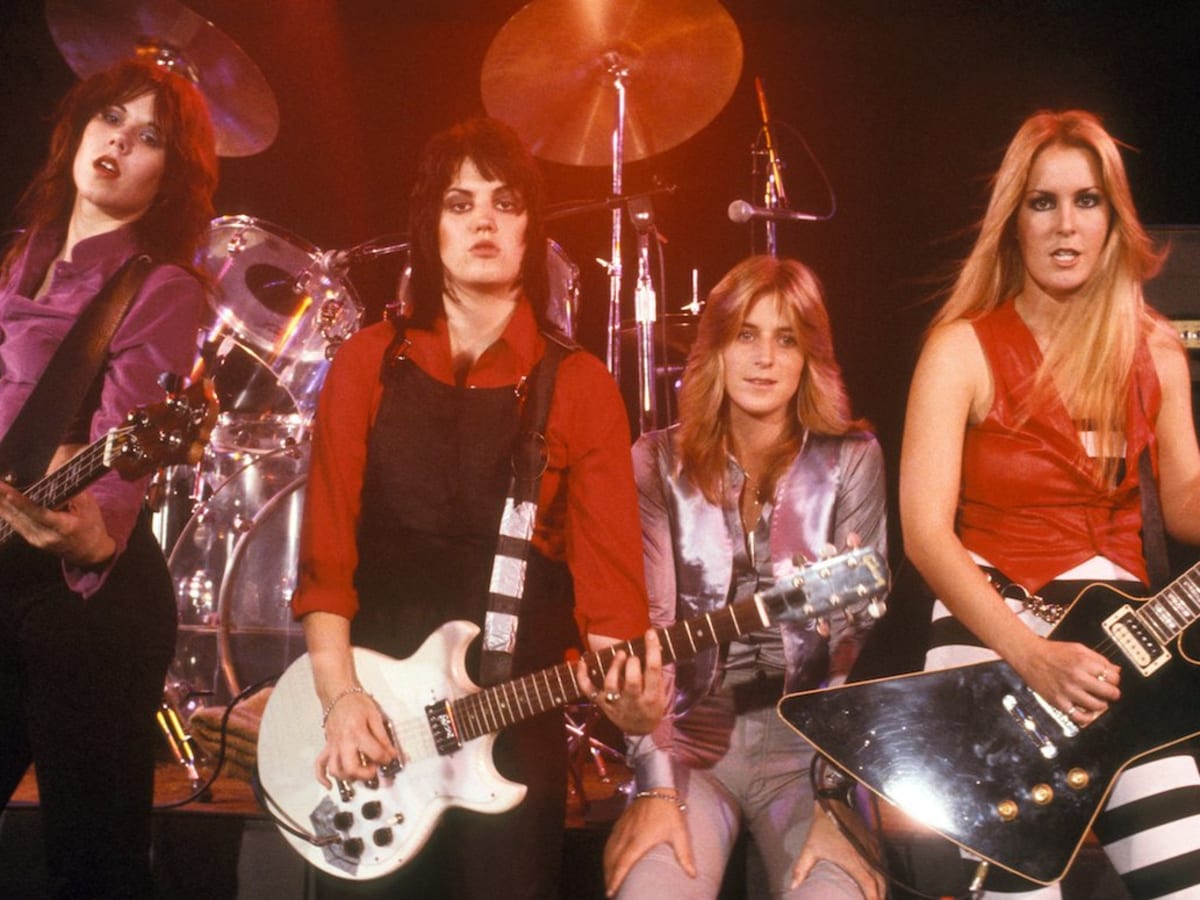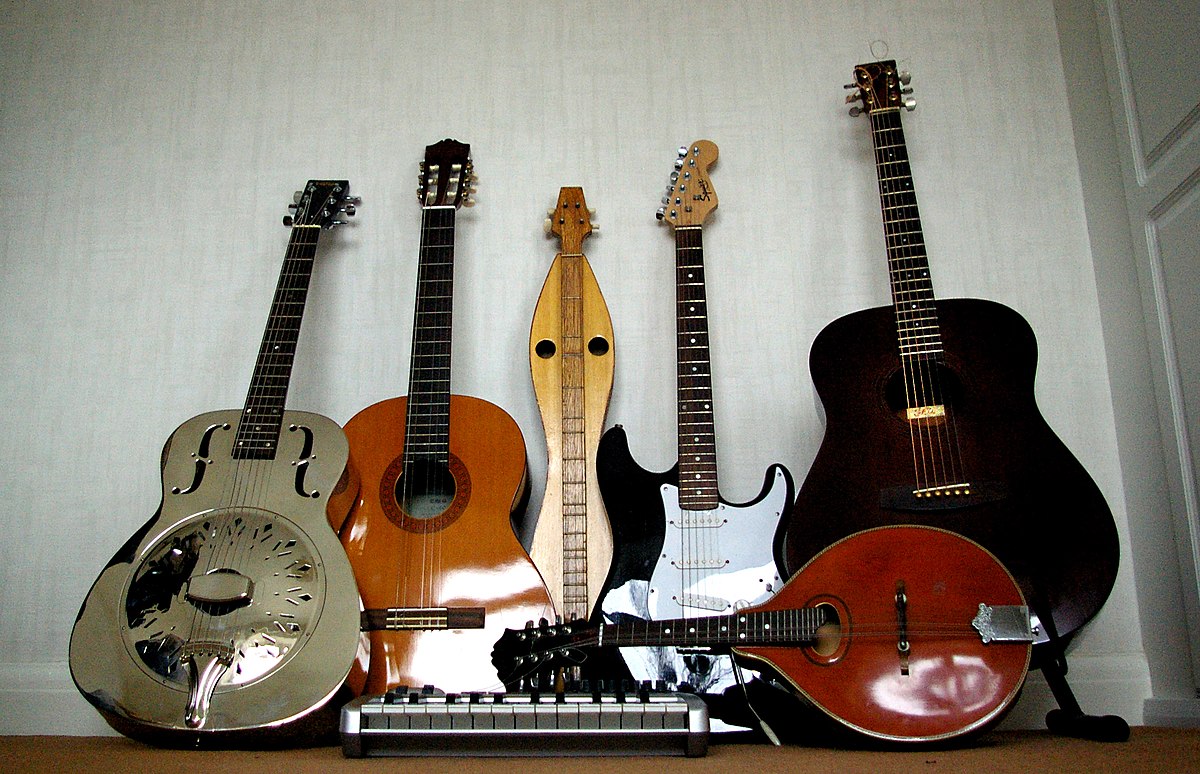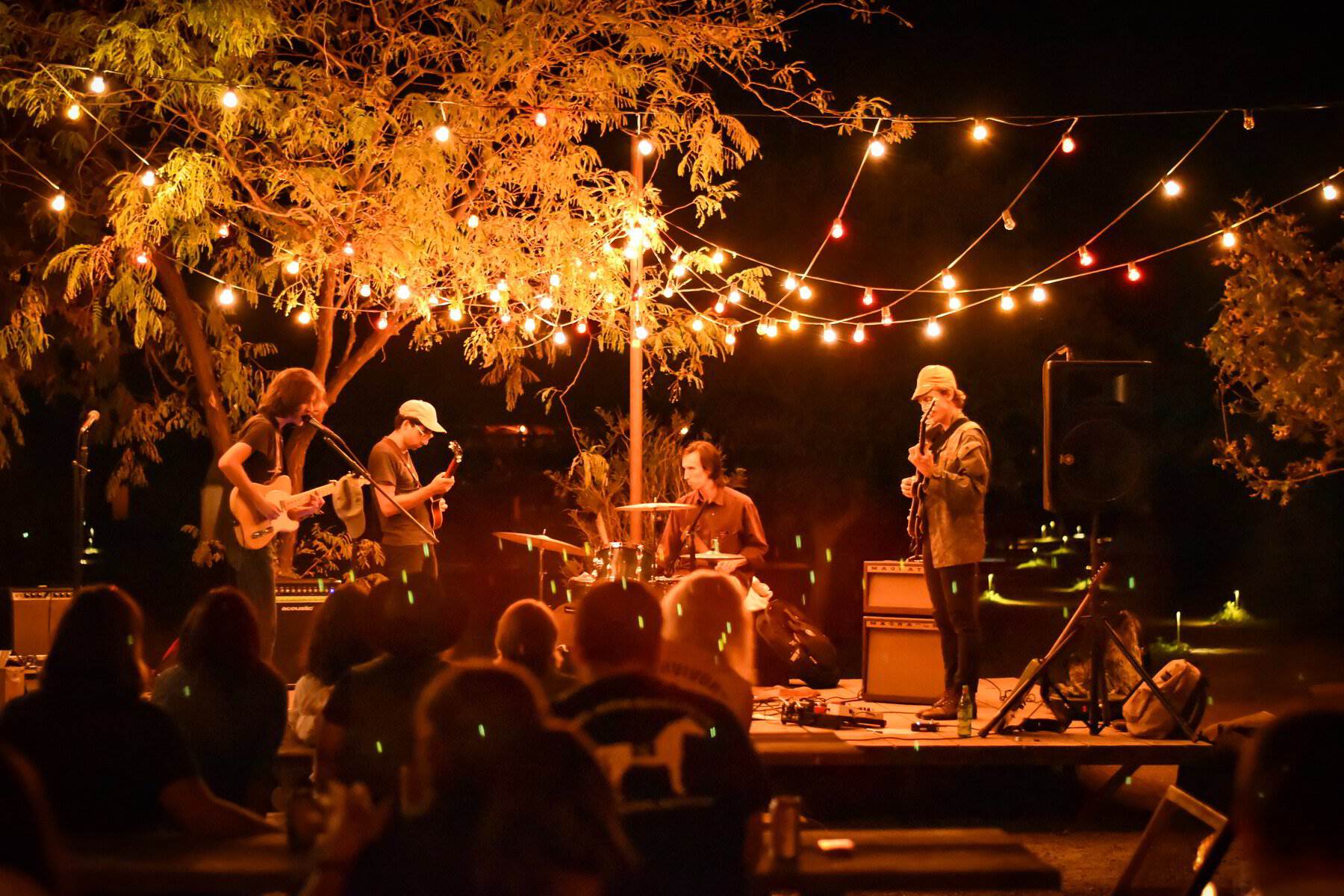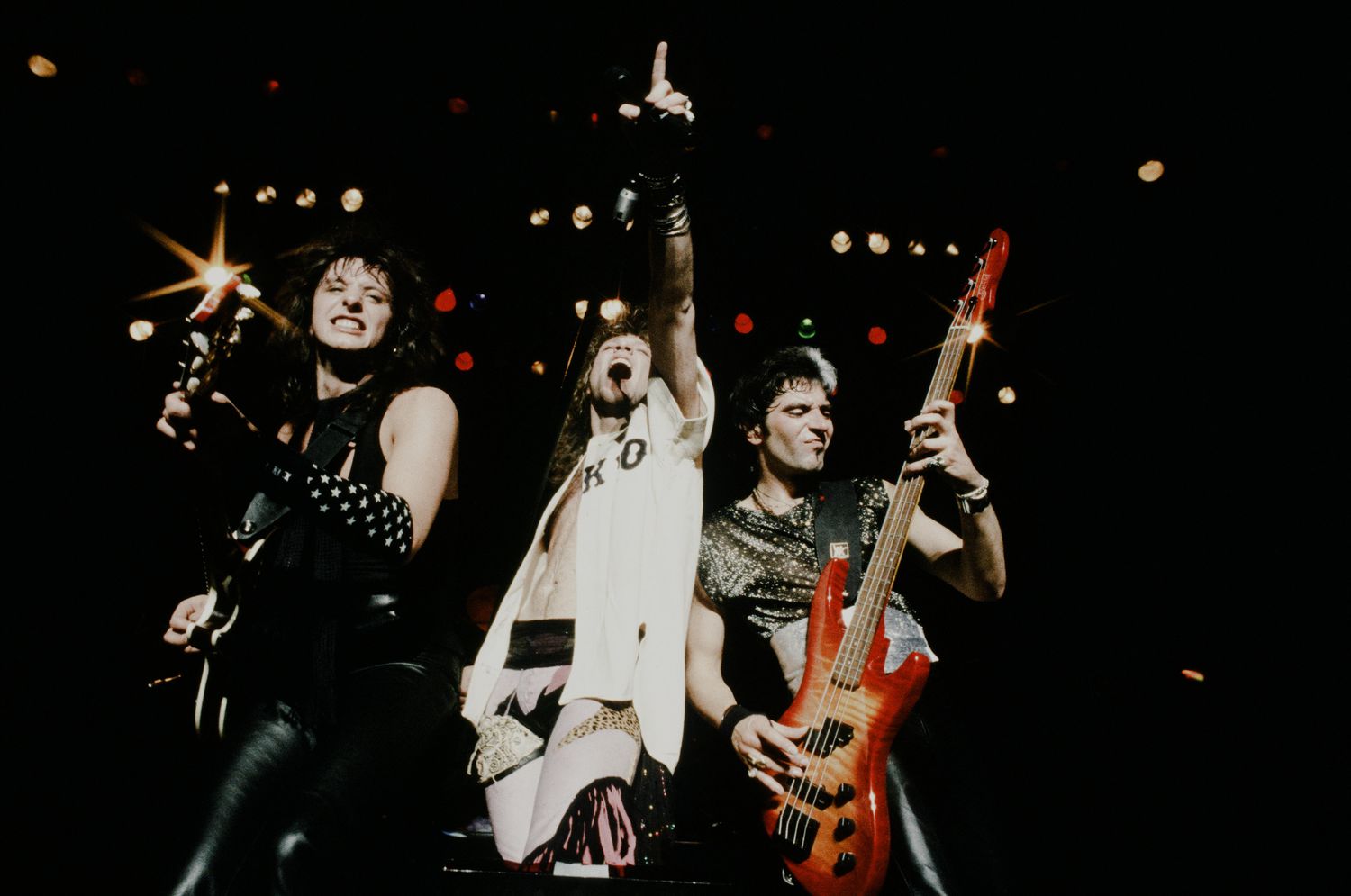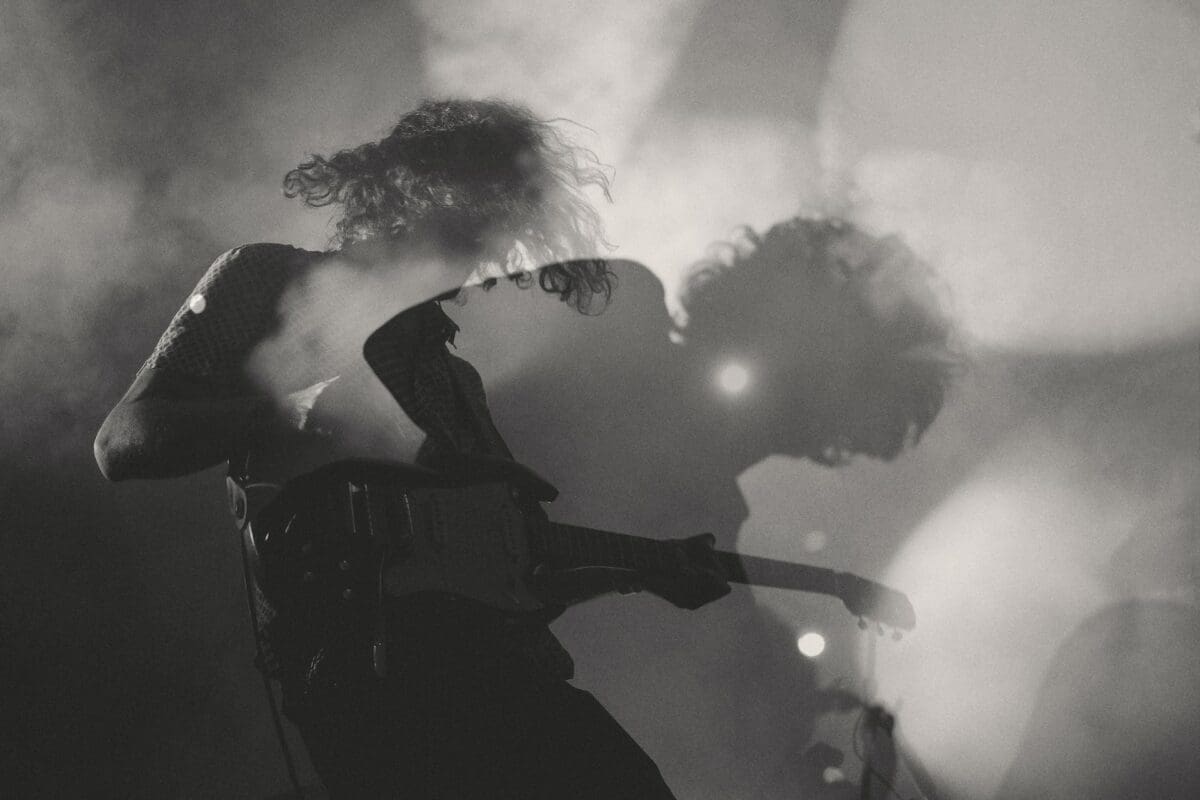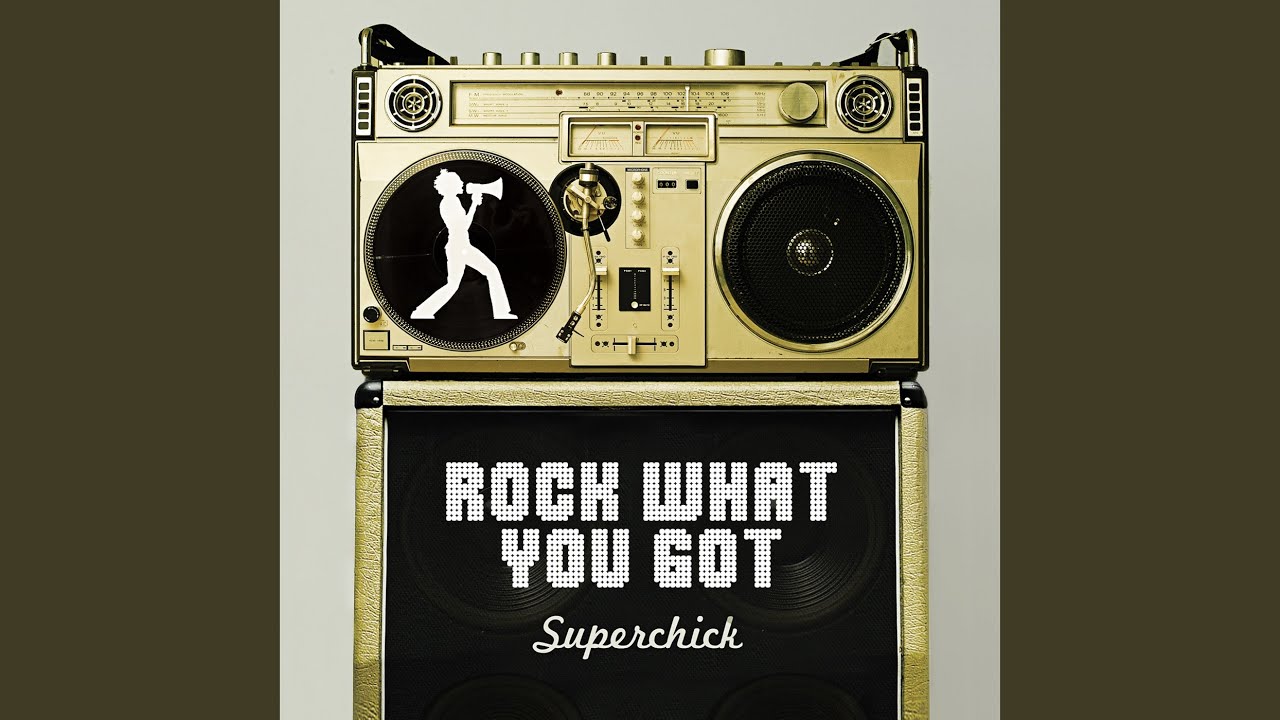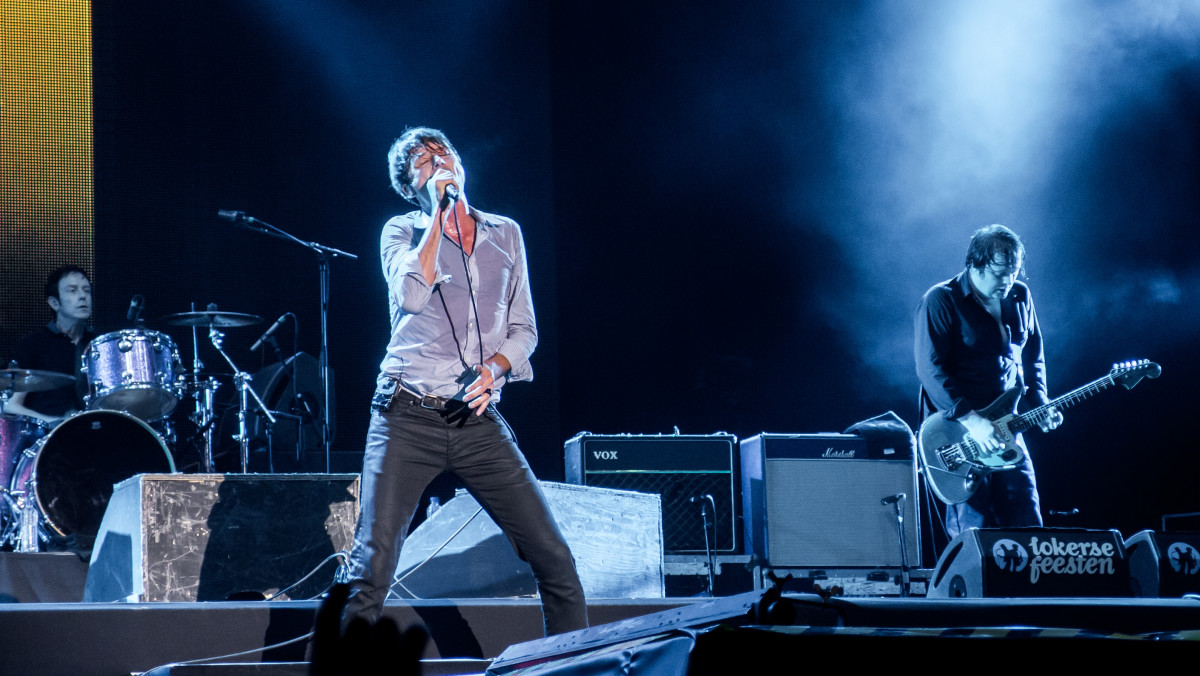

Rock
What Is Alternative Rock Music
Published: November 22, 2023
Discover the world of Alternative Rock music, its origins, influences, and distinct sound. Explore the diverse subgenres within the Rock genre and find your new favorite bands.
(Many of the links in this article redirect to a specific reviewed product. Your purchase of these products through affiliate links helps to generate commission for AudioLover.com, at no extra cost. Learn more)
Table of Contents
Introduction
Alternative rock music, often referred to simply as alternative rock, emerged as a distinct genre in the 1980s and quickly gained popularity as a counter-cultural movement to mainstream rock. With its roots in punk, post-punk, and indie rock, alternative rock provided musicians with an avenue to explore diverse sounds and express their individuality. Over the years, alternative rock has evolved and diversified, giving rise to various subgenres and producing influential bands that have left an indelible mark on the music industry.
Alternative rock is characterized by its nonconformist and experimental approach, challenging traditional musical conventions and pushing boundaries. It incorporates a wide range of musical styles, from grunge and punk to shoegaze and indie pop. The genre’s lyrics often address themes of social and political commentary, personal introspection, and emotional exploration, resonating with listeners who crave depth and authenticity in their music.
Throughout its history, alternative rock has witnessed the rise of iconic bands and artists who have shaped the genre and influenced generations of musicians. From pioneers like R.E.M. and Nirvana to contemporary acts like Arctic Monkeys and Tame Impala, alternative rock offers a diverse and ever-evolving landscape of sounds and styles.
Alternative rock has had a profound impact on popular culture, influencing not just music, but also fashion, art, and attitude. The genre’s emphasis on individualism and nonconformity has inspired countless fans to embrace their unique identities and reject societal norms.
Despite its popularity and influence, alternative rock has not been without its share of criticisms and controversies. Some argue that the genre became too commercialized and lost its rebellious spirit, while others believe that alternative rock’s inclusivity led to dilution and lack of a distinct identity.
In this article, we will explore the origins, characteristics, subgenres, influential bands, and the evolution of alternative rock. We will also delve into the impact of alternative rock on popular culture and examine some of the criticisms and controversies surrounding the genre. So, get ready to dive into the world of alternative rock and uncover the captivating sounds and stories it has to offer.
Origins of Alternative Rock
The origins of alternative rock can be traced back to the late 1970s and early 1980s when bands started to stray away from the polished sound of mainstream rock. Influenced by the DIY ethos of punk rock, these bands sought to create music that was raw, authentic, and independent of commercial constraints.
Punk rock, with its aggressive and rebellious attitude, laid the foundation for the emergence of alternative rock. Bands like The Ramones, The Clash, and Sex Pistols ignited a movement that inspired countless musicians to question the status quo and create their own sound.
The term “alternative rock” itself gained prominence in the 1980s as a way to describe the music that deviated from the mainstream. It encompassed a wide range of styles and subgenres, including post-punk, indie rock, and college rock.
Post-punk bands like Joy Division and The Cure introduced a darker and more introspective sound to alternative rock, incorporating elements of punk, experimental rock, and electronic music. Their gloomy lyrics and atmospheric compositions set the stage for the emergence of gothic and shoegaze subgenres in the 1980s and 1990s.
Indie rock, on the other hand, reflected the DIY spirit of punk, with bands releasing their music independently and forging their own paths. Artists like R.E.M., Pixies, and Sonic Youth gained a cult following through their innovative approach and refusal to conform to the mainstream.
Another significant contributor to the origins of alternative rock was the college radio scene. College radio stations provided a platform for independent and alternative artists to gain exposure and develop a dedicated fanbase. This led to the rise of college rock bands such as The Smiths, Hüsker Dü, and Dinosaur Jr., who found success outside of the commercial mainstream.
The underground music scene of the 1980s played a crucial role in fostering the growth of alternative rock. The alternative club circuit, independent record labels, and fanzines created a network that allowed bands and fans to connect and thrive outside of the mainstream music industry.
As alternative rock continued to evolve and gain popularity, it began to influence and intersect with other genres such as grunge, Britpop, and emo. These diverse influences and the spirit of experimentation paved the way for a vibrant and ever-evolving alternative rock landscape.
Overall, the origins of alternative rock can be attributed to a diverse range of musical movements, cultural shifts, and a desire to break away from the constraints of mainstream rock. By challenging traditional norms and pushing boundaries, alternative rock set the stage for a new era of music that celebrated individuality and artistic expression.
Characteristics of Alternative Rock Music
Alternative rock is a genre known for its distinct characteristics that set it apart from mainstream rock. Although the genre encompasses a wide range of styles and subgenres, there are certain elements that are commonly associated with alternative rock music.
One of the key characteristics of alternative rock is its nonconformist and experimental nature. Alternative rock musicians often reject the traditional structures and formulas of mainstream rock, opting instead for unconventional song structures, unique instrumentation, and unconventional melodies. This experimental approach allows for a greater level of artistic freedom and exploration.
Lyrically, alternative rock tends to tackle a wide range of themes, from introspective and personal to social and political commentary. Many alternative rock songs delve into deep emotional introspection, exploring themes of angst, alienation, and existentialism. Political and social issues are also common topics, with artists using their music as a platform to express their views and spark conversations.
The sonic palette of alternative rock is diverse, with influences ranging from punk and grunge to pop and electronic music. Guitars play a prominent role in alternative rock, often characterized by distorted and raw tones. Drumming can range from energetic and fast-paced to more minimalist and atmospheric depending on the subgenre. Bass lines are usually melodic and provide a strong foundation for the music.
Another hallmark of alternative rock is the emphasis on authenticity and DIY ethos. Many alternative rock bands have a strong connection to their local music scenes and often release their music independently or through small, independent record labels. This DIY approach allows artists to maintain creative control and cater to a more niche audience.
Alternative rock also places importance on the live performance aspect of music. Many alternative rock bands gained recognition through their energetic and captivating live shows, often creating a sense of intimacy and connection with their audience. The live environment offers a space for artists to express themselves freely and engage in improvisation, creating unique and memorable experiences for concertgoers.
Overall, the characteristics of alternative rock music can be summarized as its nonconformist and experimental nature, diverse sonic palette, lyrically introspective themes, emphasis on authenticity, and the importance of live performance. These characteristics have contributed to the enduring appeal and influence of alternative rock, allowing it to evolve and adapt to changing musical climates while maintaining its distinct identity.
Subgenres of Alternative Rock
Alternative rock encompasses a wide array of subgenres, each with its own distinct sound and characteristics. These subgenres have emerged over the years as artists have pushed the boundaries of alternative rock and explored new musical territories. Here are some of the prominent subgenres within the alternative rock genre:
- Grunge: Grunge emerged in the early 1990s, primarily in the Seattle music scene, and gained international recognition. This subgenre is characterized by its heavy and distorted guitar sound, angst-filled lyrics, and raw, unpolished production. Bands like Nirvana, Pearl Jam, and Soundgarden are considered pioneers of grunge.
- Indie Rock: Indie rock, short for independent rock, refers to a diverse range of styles characterized by its DIY ethos and independent spirit. It incorporates elements of punk, pop, and folk, with a focus on melodic hooks and introspective lyrics. Bands like The Strokes, Arcade Fire, and Vampire Weekend have achieved mainstream success within the indie rock genre.
- Shoegaze: Shoegaze is a subgenre that emerged in the late 1980s and early 1990s, characterized by its ethereal and dreamy soundscapes. It is known for its extensive use of guitar effects, hazy vocals, and wall of sound production. Bands like My Bloody Valentine, Slowdive, and Ride are considered pioneers of shoegaze.
- Post-punk: Post-punk developed as a reaction to the punk movement, incorporating more complex song structures and experimental elements. It often explores darker and more introspective themes, with influences from art rock and new wave. Bands like Joy Division, The Cure, and Gang of Four are associated with the post-punk subgenre.
- Emo: Emo, short for emotional hardcore, emerged in the late 1980s and reached its peak in the early 2000s. It is characterized by confessional and introspective lyrics, often dealing with themes of heartbreak, identity, and emotional turmoil. Bands like Dashboard Confessional, My Chemical Romance, and Jimmy Eat World are prominent within the emo subgenre.
- Britpop: Britpop originated in the UK in the 1990s as a response to the dominance of American alternative rock. It is characterized by its catchy melodies, British cultural references, and a revival of guitar-driven rock. Bands like Oasis, Blur, and Pulp are associated with the Britpop subgenre.
These subgenres represent just a fraction of the diverse range of styles within the alternative rock genre. Each subgenre brings its own unique blend of influences and characteristics, allowing fans to explore different sonic landscapes and connect with the music on a personal level. The evolution and proliferation of subgenres within alternative rock continue to showcase the genre’s versatility and enduring appeal.
Influential Alternative Rock Bands
Alternative rock has been shaped and influenced by numerous bands and artists who have left a lasting impact on the genre and the music industry as a whole. These influential bands have pushed the boundaries of alternative rock, paving the way for new sounds and inspiring generations of musicians. Here are some of the most influential alternative rock bands:
- Nirvana: Nirvana is often credited with bringing alternative rock into the mainstream in the early 1990s with their breakthrough album “Nevermind.” Their raw and energetic sound, led by the iconic Kurt Cobain, resonated with a generation and gave birth to the grunge movement.
- R.E.M.: R.E.M. played a pivotal role in the development of alternative rock, particularly in the college rock scene of the 1980s. Their jangly guitar sound, catchy melodies, and introspective lyrics helped define the sound of alternative rock, and they achieved critical and commercial success with albums like “Automatic for the People” and “Out of Time.”
- Radiohead: Known for their sonic experimentation and thought-provoking lyrics, Radiohead has consistently pushed the boundaries of alternative rock. Albums like “OK Computer” and “Kid A” are considered pioneering works in the genre, showcasing the band’s innovation and willingness to venture into uncharted musical territory.
- The Smiths: The Smiths, led by the enigmatic Morrissey and Johnny Marr, are revered for their blend of jangly guitars, introspective lyrics, and Morrissey’s distinctive vocals. Their influence can be felt in the indie rock and Britpop movements that followed, as well as in the wave of alternative rock bands that emerged in the 1990s.
- Pixies: Pixies had a profound impact on alternative rock with their distinctive blend of surf rock, punk, and grunge. Their loud-quiet dynamics, unconventional song structures, and Black Francis’ raw vocals set them apart and inspired bands such as Nirvana and Radiohead.
- Sonic Youth: Sonic Youth’s experimental approach to alternative rock, incorporating noise, feedback, and unconventional tunings, made them a groundbreaking force in the genre. Their influence can be heard in alternative and indie bands that prioritize innovation and sonic exploration.
These are just a few examples of the influential bands that have shaped alternative rock. Countless other acts, including Smashing Pumpkins, The Cure, Pearl Jam, and Arcade Fire, have made significant contributions to the genre’s evolution and have left an indelible mark on the alternative rock landscape.
Their creativity, passion, and willingness to challenge conventional norms have not only shaped alternative rock but have also influenced the wider music industry. These bands continue to inspire new generations of musicians to push boundaries and create music that is authentic, thought-provoking, and unafraid to challenge the status quo.
Evolution and Popularity of Alternative Rock
Over the years, alternative rock has experienced a significant evolution in both sound and popularity. What started as a counter-cultural movement in the 1980s has grown into a mainstream genre that continues to thrive and influence the music industry.
In its early years, alternative rock was largely underground, with bands releasing music independently and gaining recognition through college radio and the underground music scene. However, the 1990s marked a turning point for the genre as alternative rock began to infiltrate the mainstream. The success of bands like Nirvana, Pearl Jam, and Smashing Pumpkins propelled alternative rock into the mainstream consciousness, thanks in part to the commercial success of their albums and the explosion of the grunge movement.
The rise of alternative rock in the 1990s was further fueled by various subgenres such as Britpop, post-grunge, and nu-metal. Bands like Oasis, Blur, and Radiohead gained international acclaim, showcasing the genre’s diversity and appeal. Alternative rock became a dominant force on the charts and the radio, with countless hits and iconic anthems that spoke to a generation disenchanted with mainstream popular music.
The popularity of alternative rock continued into the 2000s, with bands like Coldplay, The White Stripes, and Arctic Monkeys expanding the genre’s reach and redefining its sound. Additionally, the emergence of online music platforms and social media allowed alternative rock bands to connect with their audience directly, bypassing traditional record label structures and further expanding their fan bases.
Today, alternative rock remains a vibrant and influential genre, though it has evolved and diversified even further. Artists continue to push the boundaries of alternative rock, incorporating elements from other genres such as electronic music, hip-hop, and folk. This constant evolution has helped the genre stay relevant and appeal to a new generation of listeners.
Alternative rock festivals, such as Coachella, Lollapalooza, and Glastonbury, have become major cultural events, drawing massive crowds and showcasing both established and emerging alternative rock acts. This further signifies the enduring popularity of the genre and its ability to captivate audiences on a large scale.
Despite its commercial success and mainstream acceptance, alternative rock has managed to maintain its rebellious and nonconformist spirit. Many alternative rock bands continue to prioritize artistic integrity and independence, often releasing music outside of traditional structures and resisting commercial pressures.
The evolution and popularity of alternative rock can be attributed to its ability to resonate with listeners on a deeper level, offering a sense of authenticity and emotional connection. As the music industry continues to evolve, alternative rock remains a significant genre that influences and inspires both musicians and fans worldwide.
Impact of Alternative Rock on Popular Culture
Alternative rock has had a profound influence on popular culture, extending beyond the realm of music. The genre’s unique sound, rebellious spirit, and emphasis on individuality have permeated various aspects of society, including fashion, art, and attitude.
One of the most evident impacts of alternative rock on popular culture is in the realm of fashion. Alternative rock gave rise to distinctive fashion trends that reflected its nonconformist ethos. Grunge fashion, popularized by bands like Nirvana, became a prominent style in the 1990s, characterized by flannel shirts, ripped jeans, and unkempt hairstyles. This anti-fashion aesthetic challenged the polished and glamorous image often associated with mainstream music, pushing for an edgier and more relaxed style.
Alternative rock also influenced the visual arts, with album covers and music videos becoming important artistic platforms. Many alternative rock bands collaborated with renowned artists and photographers, resulting in iconic album covers that captured the essence of the music. Music videos, such as those by Radiohead and Björk, pushed the boundaries of creativity and visual storytelling, becoming an art form in their own right.
The impact of alternative rock extends beyond fashion and art. The genre’s emphasis on individuality and nonconformity resonated with a generation seeking authenticity and a sense of identity. Alternative rock became a soundtrack for those who felt marginalized or disenchanted with the mainstream, offering a sense of belonging and unity. Fans of alternative rock found solace in the music and formed tight-knit communities that embraced their unique identities and celebrated the diversity within the genre.
Furthermore, alternative rock played a role in shaping societal and political discourse. Many alternative rock songs addressed social and political issues, tackling topics such as inequality, injustice, and environmental concerns. The music served as a vehicle for expressing dissent and challenging the status quo, inspiring listeners to critically engage with the world around them and take action.
The influence of alternative rock on popular culture can still be felt today. Many contemporary artists, across different genres, draw inspiration from alternative rock and incorporate its ethos into their work. Alternative rock has influenced the development of other subgenres and continues to be a source of inspiration for musicians seeking to push boundaries and defy conventions.
Overall, alternative rock’s impact on popular culture goes beyond music. It has shaped fashion trends, fostered artistic expression, influenced attitudes and identities, and even driven societal and political conversations. Through its unique sound and rebellious spirit, alternative rock has left an indelible mark on popular culture, contributing to a more diverse and authentic artistic landscape.
Criticisms and Controversies Surrounding Alternative Rock
Like any genre, alternative rock has faced its fair share of criticisms and controversies throughout its history. While it has enjoyed immense popularity and acclaim, there are those who have voiced concerns about various aspects of the genre.
One common criticism is that alternative rock became too commercialized and lost its initial rebellious and nonconformist spirit. As the genre gained mainstream success in the 1990s, some argued that it became co-opted by major record labels, resulting in a dilution of its sound and message. Critics asserted that alternative rock bands were packaged and marketed to fit a certain image, making it difficult for underground and independent artists to gain recognition.
Another controversy surrounding alternative rock is the perception that it lacks diversity and inclusivity. Critics argue that the genre has predominantly been dominated by white male artists, often overlooking artists from marginalized communities. This criticism prompted conversations about representation and opportunities for underrepresented groups within alternative rock.
Additionally, alternative rock has been accused of perpetuating a certain “angsty” and melancholic stereotype. Some argue that the genre’s emphasis on introspection and emotional expression can sometimes lead to an oversaturation of somber and moody themes, potentially overshadowing other aspects of the music. Critics suggest that a broader range of emotions and perspectives should be represented within alternative rock.
Another point of contention revolves around the definition and boundaries of alternative rock itself. As the genre has evolved and diversified, defining what exactly constitutes alternative rock has become increasingly challenging. This lack of a clear definition has led to debates about inclusiveness and genre labeling, with some arguing that alternative rock should remain fluid and open to different interpretations, while others assert the need for more specific parameters.
Furthermore, alternative rock has faced criticism for its association with substance abuse and mental health issues. The tragic deaths of influential figures like Kurt Cobain and Layne Staley have led to questions about the dark underbelly of the genre and its impact on artists’ well-being. Some argue that alternative rock’s fixation on pain and suffering can romanticize destructive behaviors and perpetuate harmful stereotypes.
It is important to note that these criticisms and controversies surrounding alternative rock do not undermine its impact and importance. They serve as opportunities for discussion, growth, and progress within the genre. Alternative rock continues to evolve and adapt, embracing new voices, styles, and ideas, while still holding onto its core principles of individuality, artistic expression, and a willingness to challenge conventions.
Ultimately, the criticisms and controversies surrounding alternative rock highlight the genre’s ongoing relevance and its capacity for introspection and self-reflection. By addressing these concerns, alternative rock has the potential to continue evolving and remaining a vibrant and inclusive space for artists and fans alike.
Conclusion
Alternative rock has undoubtedly left a lasting impact on the music industry and popular culture. What began as a counter-cultural movement in the 1980s has evolved into a diverse and influential genre that continues to captivate audiences worldwide.
From its origins in punk and post-punk to the emergence of subgenres like grunge, shoegaze, and Britpop, alternative rock has constantly pushed boundaries and challenged musical conventions. Artists within the genre have used their music as a platform for personal introspection, social commentary, and artistic experimentation, resonating with fans who seek authenticity and depth in their music.
Alternative rock has influenced not only the soundscape of music but also fashion, art, and cultural attitudes. The genre’s nonconformist spirit and emphasis on individuality have inspired fans to embrace their unique identities and reject societal norms. It has provided a sense of community and belonging for those who felt marginalized or disenchanted with the mainstream.
While alternative rock has garnered commercial success and mainstream acceptance, it has also faced criticisms and controversies. Concerns about commercialization, lack of diversity, and romanticization of certain themes have prompted important conversations within the genre. These discussions have allowed alternative rock to adapt, evolve, and broaden its definition, ensuring its relevance and inclusivity.
Looking ahead, alternative rock continues to evolve and intertwine with other genres, creating new sounds and pushing artistic boundaries. The genre remains a breeding ground for innovative and authentic voices to flourish, attracting new talent and inspiring future generations of musicians.
In conclusion, alternative rock has had a profound impact on the music industry and popular culture as a whole. Its diverse range of sounds, its daring spirit, and its ability to resonate deeply with listeners make it a genre that continues to captivate and inspire. Alternative rock’s journey is not without its challenges and controversies, but they serve as fuel for growth, reflection, and innovation. As long as there are artists willing to explore new musical territories and defy conventions, alternative rock will continue to evolve and make its mark on the ever-changing landscape of popular culture.


